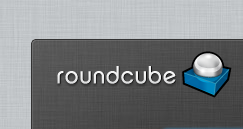How to install and configure Roundcube
 Today we’ll be talking about installing the webmail client Roundcube on your website or web server. However, before we begin I’d like to say a few words about why a webmail client is a good idea in the first place and why I decided to use Roundcube. If you’re just interested in the installation procedure, you can skip directly to the next paragraph (“Basic requirements”).
Today we’ll be talking about installing the webmail client Roundcube on your website or web server. However, before we begin I’d like to say a few words about why a webmail client is a good idea in the first place and why I decided to use Roundcube. If you’re just interested in the installation procedure, you can skip directly to the next paragraph (“Basic requirements”).
Why install a webmail client? I can answer that question only for me and my specific case. I have several email addresses – one is a Gmail address and the others are addresses for my websites and blogs that all have the format @website-name.net.
So when I want to see my emails, I don’t want to open five different websites and three programs. I’d like for everything to be in one […]

 This article is going to be all about how you can control, customize and extend other programs using C#. As an example scenario we’re going to be extending the default Windows program Notepad with a custom function.
This article is going to be all about how you can control, customize and extend other programs using C#. As an example scenario we’re going to be extending the default Windows program Notepad with a custom function. No matter how frumpy SAP may look most of the time, nevertheless you can build such modern things like web services inside the SAP system. Even the WSDL (Web Service Description File) file can be generated in SAP. I read about this feature (WSDL generation) just at the right time, because recent days I should write a web service in SAP which should be triggered by a C# application.
No matter how frumpy SAP may look most of the time, nevertheless you can build such modern things like web services inside the SAP system. Even the WSDL (Web Service Description File) file can be generated in SAP. I read about this feature (WSDL generation) just at the right time, because recent days I should write a web service in SAP which should be triggered by a C# application.